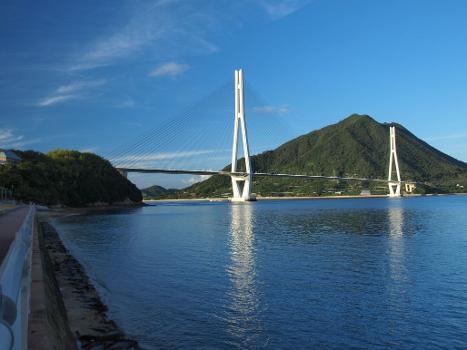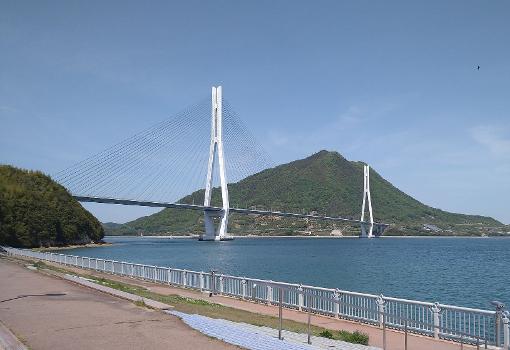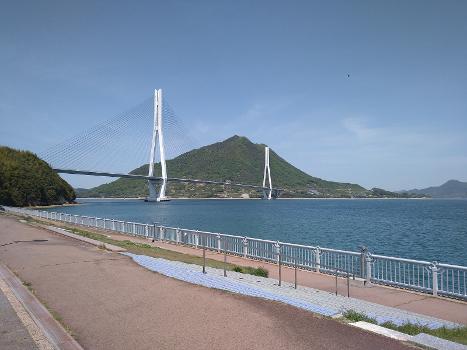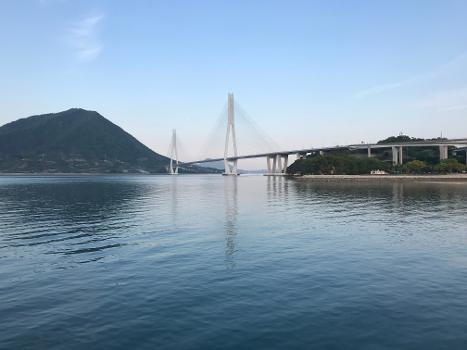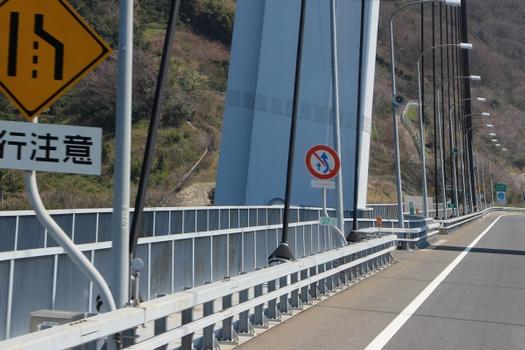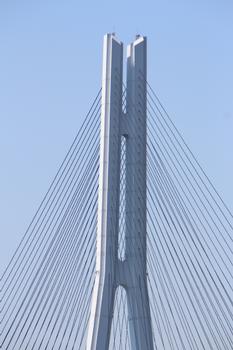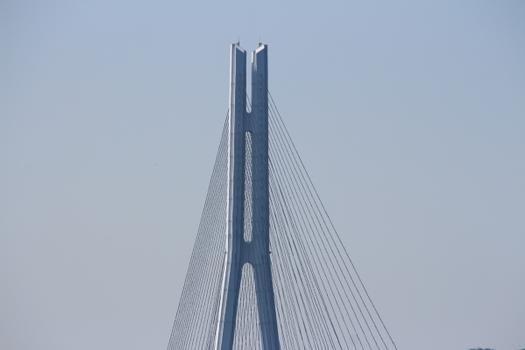General Information
| Name in local language: | 多々羅大橋 (Tatara Ōhashi) |
|---|---|
| Beginning of works: | 1993 |
| Completion: | 1 May 1999 |
| Status: | in use |
Project Type
| Structure: |
Cable-stayed bridge with semi-fan system |
|---|---|
| Function / usage: |
Motorway bridge / freeway bridge |
| Material: |
Steel-reinforced concrete composite bridge |
| Structure: |
Three-span cable-stayed bridge |
| Secondary structure(s): |
Structurae Plus/Pro - Subscribe Now! |
| Material: |
Structurae Plus/Pro - Subscribe Now! |
| Secondary structure(s): |
Structurae Plus/Pro - Subscribe Now! |
Location
| Location: |
Ikuchi, Hiroshima, Japan Ohmishima, Ehime, Japan |
|---|---|
| Part of: | |
| Coordinates: | 34° 15' 28.63" N 133° 3' 18.34" E |
| Coordinates: | 34° 15' 40.47" N 133° 4' 19.76" E |
Technical Information
Dimensions
| main span | 890 m | |
| total length | 1 480 m | |
| span lengths | 270.0 m - 890.0 m - 320.0 m | |
| clearance | 26.0 m | |
| number of spans | 3 | |
| walkway width | 5.0 m | |
| vertical navigation clearance | 26 m | |
| deck | deck width | 30.6 m |
| pylons | pylon height | 220.0 m |
Cost
| cost of construction | ca. Japanese yen 140 000 000 000 |
Materials
| cables |
steel
|
|---|---|
| deck |
composite
|
| pylons |
reinforced concrete
|
Excerpt from Wikipedia
The Tatara Bridge (多々羅大橋, Tatara Ōhashi) is a cable-stayed bridge that is part of the Nishiseto Expressway, commonly known as the Shimanami Kaidō しまなみ海道. The bridge has a center span of 890 metres (2,920 ft). As of 2010 it has the fourth longest main span of any cable-stayed bridge after the Sutong Bridge. The expressway is a series of roads and bridges that is one of the three routes of the Honshū-Shikoku Bridge Project connecting the islands of Honshū and Shikoku across the Seto Inland Sea in Japan. The Kurushima-Kaikyō Bridge is on the same route.
The bridge, which opened on May 1, 1999, carries two lanes of traffic in each direction and has additional lanes for bicycles, motor bikes, and pedestrians.
The Tatara Bridge was originally planned as a suspension bridge in 1973. In 1989, the design was changed to a cable-stayed bridge with the same span. By building a cable-stayed bridge a large excavation for an anchorage would not be needed, thereby lessening the environmental impact on the surrounding area. The steel towers are 220 metres (722 ft) high and shaped like an inverted Y. The side-spans are 164.5 metres (540 ft) and 257.5 metres (845 ft) respectively, and there are also three very small cable spans.
Construction of the bridge took a little more than six years and was accomplished without any accidents. Many technological advancements were part of the design and testing of the bridge.
Text imported from Wikipedia article "Tatara Bridge" and modified on May 18, 2020 according to the CC-BY-SA 4.0 International license.
Participants
Relevant Web Sites
Relevant Publications
- (1999): Accuracy control on the construction of Tatara Bridge. Presented at: IABSE Conference: Cable-Stayed Bridges - Past, Present and Future, Malmö, Sweden, 2-4 June 1999, pp. 322-331.
- (2014): Aerodynamic Characteristics of Indent Stay Cables of Tatara Bridge. Presented at: IABSE Symposium: Engineering for Progress, Nature and People, Madrid, Spain, 3-5 September 2014, pp. 2749-2756.
- (1996): Aesthetic Design for the Tatara Bridge. Presented at: 15th IABSE Congress, Copenhagen, Denmark, 16-20 June 1996, pp. 157-162.
- (2003): Bridge engineering. A global perspective. Thomas Telford, London (United Kingdom), ISBN 9780727732156, pp. 594, 602.
- (2017): Bridges. A History of the World's Most Spectacular Spans. 2nd edition, Black Dog & Leventhal, New York (USA), ISBN 978-0316507943, pp. 114-115.
- About this
data sheet - Structure-ID
20000075 - Published on:
28/10/1998 - Last updated on:
25/03/2023

